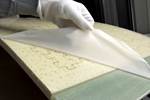Seoul National University VABS to design UAM, rotorcraft blades
University conducts research to establish conceptual and detailed design methodologies applicable to composite UAM systems and to develop digital twin technologies that can be used in aerospace.
Blade section design and fan plot examples for analyzing the vibration characteristics of UAM (blade + graph) and overall UAM design and iterative flow chart. Sources | AnalySwift, SNU
(SNU, South Korea) has been participating in AnalySwift (West Lafayette, Ind., U.S.) Academic Partner Program (APP), using its VABS simulation software to analyze urban air mobility (UAM) and other rotorcraft rotor blades.
The work is part of the Active Aeroelasticity and Rotorcraft Laboratory (AARL) in the Department of Aerospace Engineering at SNU and the SNU-UAM Center, a research center dedicated to developing the core technologies for UAM. The APP offers participating universities no-cost licenses of engineering software programs VABS and SwiftComp so students, researchers and faculty can leverage the tools in their academic research.
“The SNU-UAM Center brings together 12 laboratories from seven universities, including SNU, with the goal of securing core technologies for UAM,” says professor SangJoon Shin of the Department of Aerospace Engineering at SNU. “To ensure the safe operation of UAM, it will be essential to avoid ground resonance. VABS enables us to design the rotor blade cross-section that avoids resonance within the operational frequency range. We have been using the VABS program to perform cross-sectional design based on the given geometries and to achieve the desired vibration characteristics for the rotor blades integrated with a gimballed hub.”
First, the SNU team designed the blade cross-section and used VABS to obtain the corresponding stiffness matrix. Then, this result was provided into Camrad II, a performance analysis program for rotorcraft, to compute the vibratory response under realistic flight conditions.
Related Content
-
Damage tolerance testing of sandwich composites: The sandwich CAI test
A new ASTM-standardized test method established in 2022 assesses the compression-loaded damage tolerance of sandwich composites.
-
Corebon induction heating
This sidebar to CW’s August 2024 feature article reviews this technology for more efficient composites manufacturing and why it aligns with Koridion active core molding.
-
Improving carbon fiber SMC simulation for aerospace parts
Simutence and Engenuity demonstrate a virtual process chain enabling evaluation of process-induced fiber orientations for improved structural simulation and failure load prediction of a composite wing rib.



